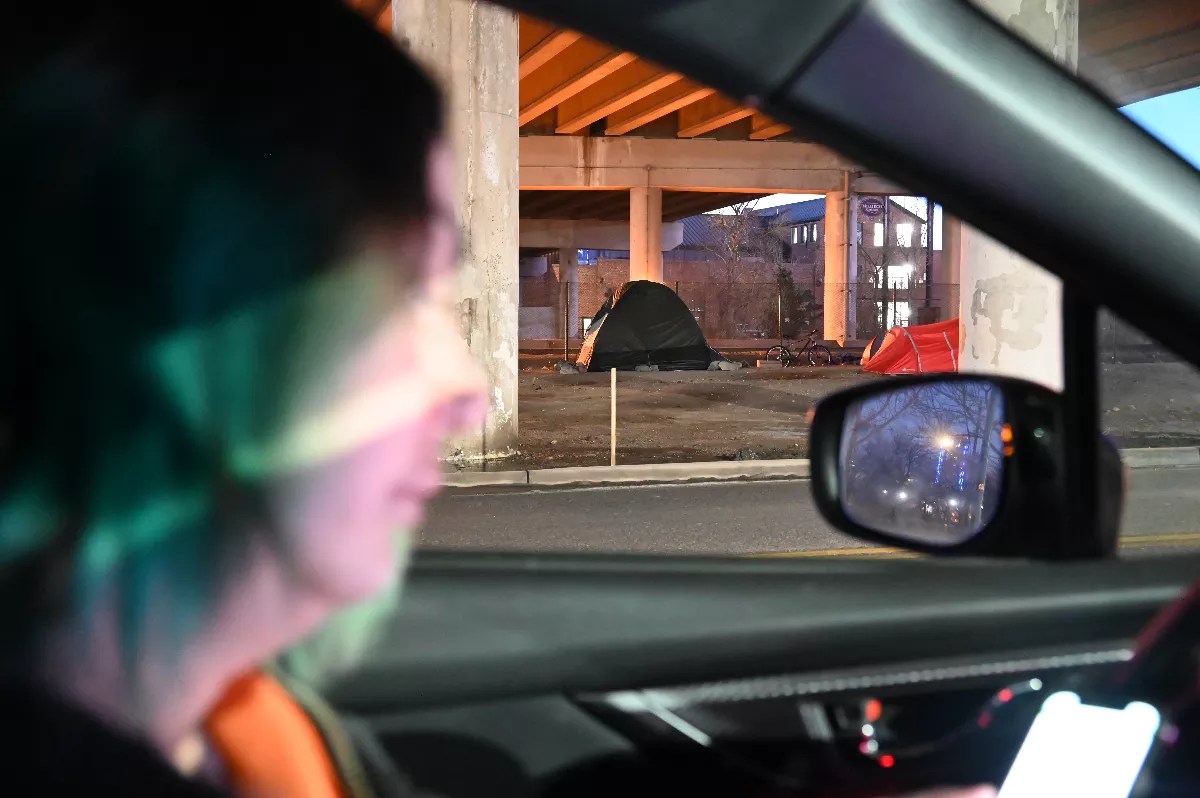
Bennito L. Kelty

Audio By Carbonatix
Counties across the Denver area tallied the number of people sleeping on the streets and at shelters for this year’s Point in Time count, a federally funded census of homeless residents in the United States that wrapped up Tuesday, January 28.
The Point in Time count is funded by the Department of Housing and Urban Development and used to estimate the homeless population at the county and national level, which also determines how federal funding is distributed throughout the year.
The count started on the night of Monday, January 27. County-level results are published in the summer, with last year’s results coming in August, but national findings are published in December.
The City and County of Denver is coming off a year where the count for unsheltered homelessness, or the number of people sleeping in the streets, was 1,300 people, down by about 100 people from the previous year. According to last year’s tally, Denver had more than 6,500 homeless residents overall, including nearly 5,300 people in shelters.
Denver, make your New Year’s Resolution Count!
We’re $10,000 away from reaching our $50,000 year-end fundraising goal. Your support could be what pushes us over the top. If our work has kept you informed and connected this year, please consider making a contribution today.
The Denver metro, which consists of Denver, Adams, Arapahoe, Douglas, Jefferson and Boulder counties, had nearly 10,000 homeless residents, including more than 7,000 people in shelters and nearly 3,000 people sleeping in the streets.
For the statewide PIT count, nearly 19,000 people were recorded as homeless in Colorado for 2024, a 30 percent increase from 14,000 people the previous year.
The results of PIT counts in the Denver metro can be found on an online dashboard run by the Metro Denver Homeless Initiative, which is the HUD-designated coordinator for nonprofits and government agencies addressing homelessness in the metro area.
The count avoids including migrant populations to avoid distorting the data, according to MDHI. Since December 2023, Denver has seen about 43,000 migrants, mostly from Venezuela, arrive in the city; the mayor’s office estimates about half have stayed somewhere in the metro area.
According to the most recent PIT national results, released on December 27, the PIT count recorded more than 770,000 homeless residents across the United States, an 18 percent increase from the 2023 count. Nearly 500,000 people were in homeless shelters while more than 270,000 were unsheltered.
How People Are Tallied for Colorado’s Point in Time Counts
The count, which is only done during one night of the year, relies on a mix of sources and strategies to count homeless residents. Shelters estimate the population and hand it over to counties, but county staff and local volunteers handle the census for the unsheltered population.
Some counties, like Denver, rely mostly on staff and volunteers going outside and counting each person they see in a tent or sleeping outside using Survey123, a mobile app designed for conducting the PIT. Others, like Jefferson County, host events in the night or morning where people can come and report that they’re unsheltered while getting services or a meal.
Last year Denver Mayor Mike Johnston touted the success of his plan to solve homelessness in the city by pointing to the decline in unsheltered homelessness in Denver revealed by last year’s PIT results. The mayor’s office claims to have brought in more than 2,300 people indoors and off the streets since mid-2023, but the PIT count found a reduction in street homelessness of 100 people and an increase in sheltered homelessness by about 900 people.
The mayor’s office has said it wants to move people out of transitional shelters like hotels and micro-communities faster this year. Cole Chandler, the mayor’s senior advisor on homelessness, told the Denver City Council Safety & Housing committee on Wednesday, January 22, that the administration plans to bring 2,000 people off the streets in 2025.
Mayor Johnston will reveal the rest of his 2025 goals on Wednesday, January 29, but he’s already said he’s happy with his efforts to solve homelessness in Denver.